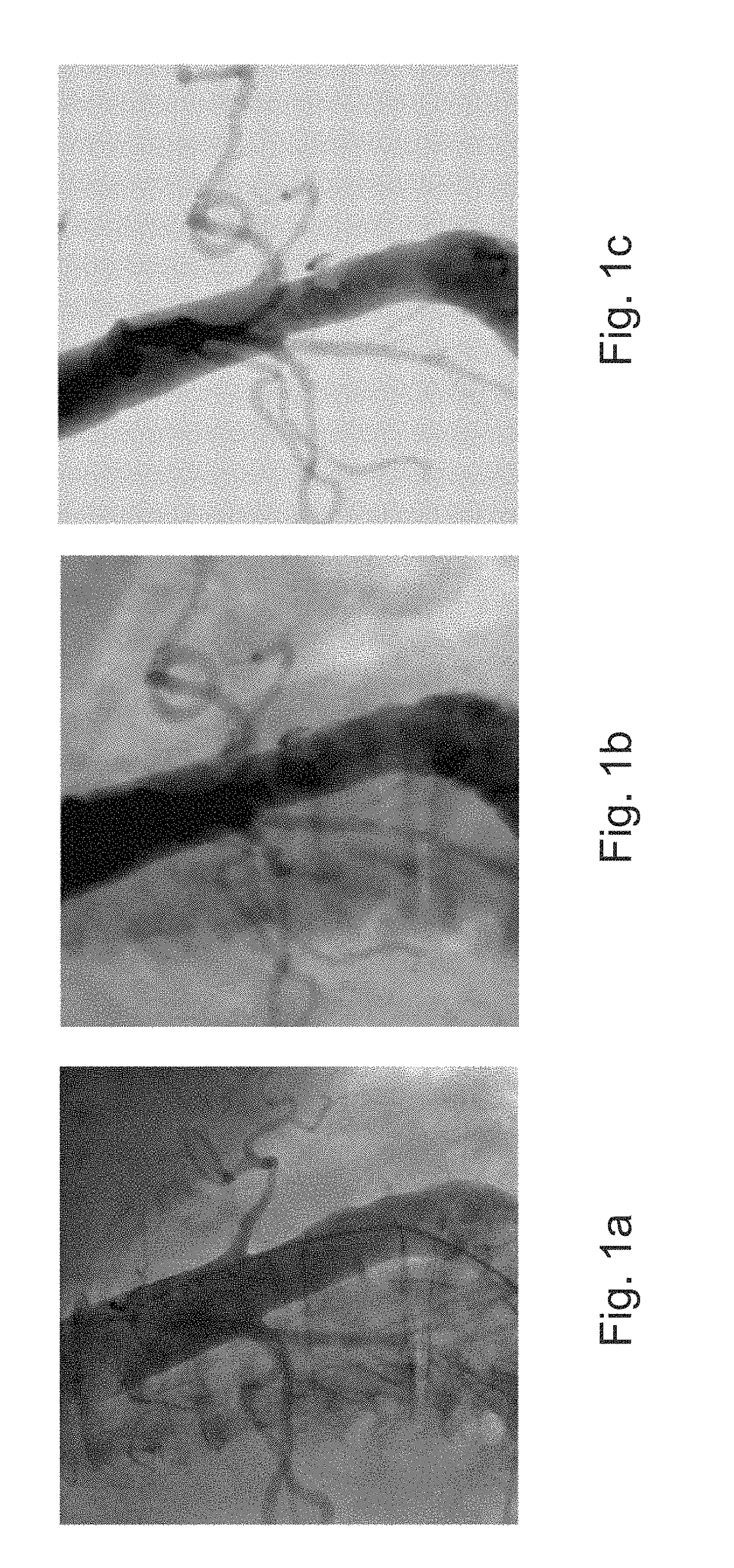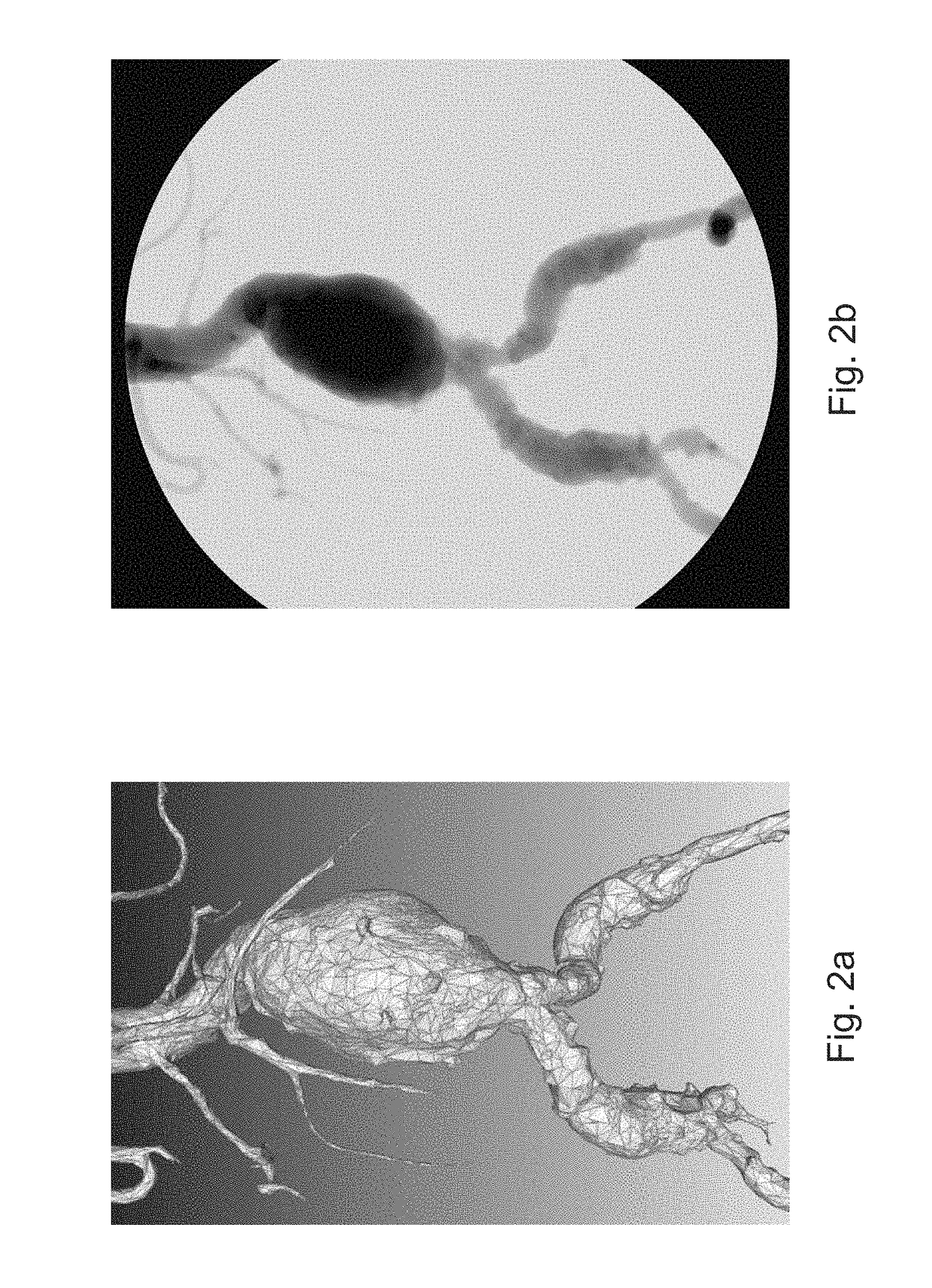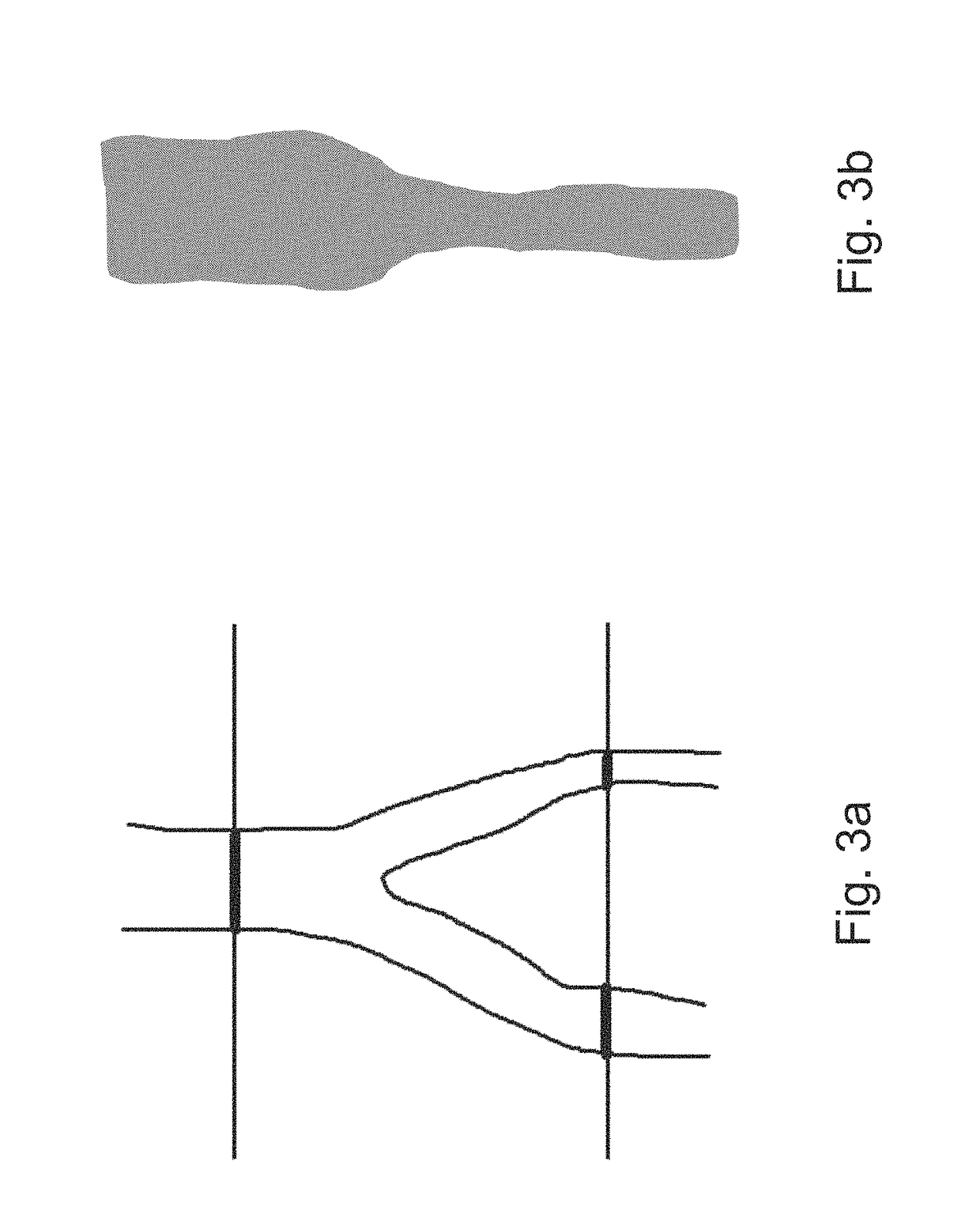Method, device and system for simulating shadow images
a technology of shadow images and devices, applied in the direction of image analysis, 2d-image generation, processor architecture/configuration, etc., can solve the problems of limited system memory, slow and time-consuming techniques according to the prior art, and inability to implement interactive applications
- Summary
- Abstract
- Description
- Claims
- Application Information
AI Technical Summary
Benefits of technology
Problems solved by technology
Method used
Image
Examples
Embodiment Construction
[0051]An angiographic image visualizes the attenuation of an X-ray beam through an object under scrutiny. No attenuation (vacuum, air) is rendered white, high attenuation (bone, metal, contrast agent) is rendered as dark grey or black. The longer the X-ray travels through highly absorbing material, the darker the image becomes. An example of such an angiographic image is shown in FIG. 1a.
[0052]FIG. 6 is a functional block diagram of an exemplary single plane angiographic system capable of obtaining angiographic images. The system includes an angiographic imaging apparatus 112 that operates under commands from user interface module 116 and will provide data to data processing module 114. The single plane angiographic imaging apparatus 112 captures a two-dimensional X-ray image of the vessel organ of interest for example in the postero-anterior (PA) direction. The single plane angiographic imaging apparatus 112 typically includes an X-ray source and detector pair mounted on an arm of...
PUM
 Login to view more
Login to view more Abstract
Description
Claims
Application Information
 Login to view more
Login to view more - R&D Engineer
- R&D Manager
- IP Professional
- Industry Leading Data Capabilities
- Powerful AI technology
- Patent DNA Extraction
Browse by: Latest US Patents, China's latest patents, Technical Efficacy Thesaurus, Application Domain, Technology Topic.
© 2024 PatSnap. All rights reserved.Legal|Privacy policy|Modern Slavery Act Transparency Statement|Sitemap



